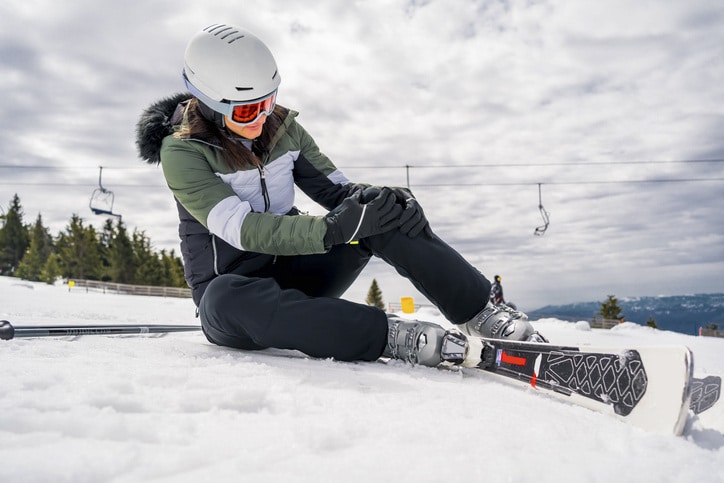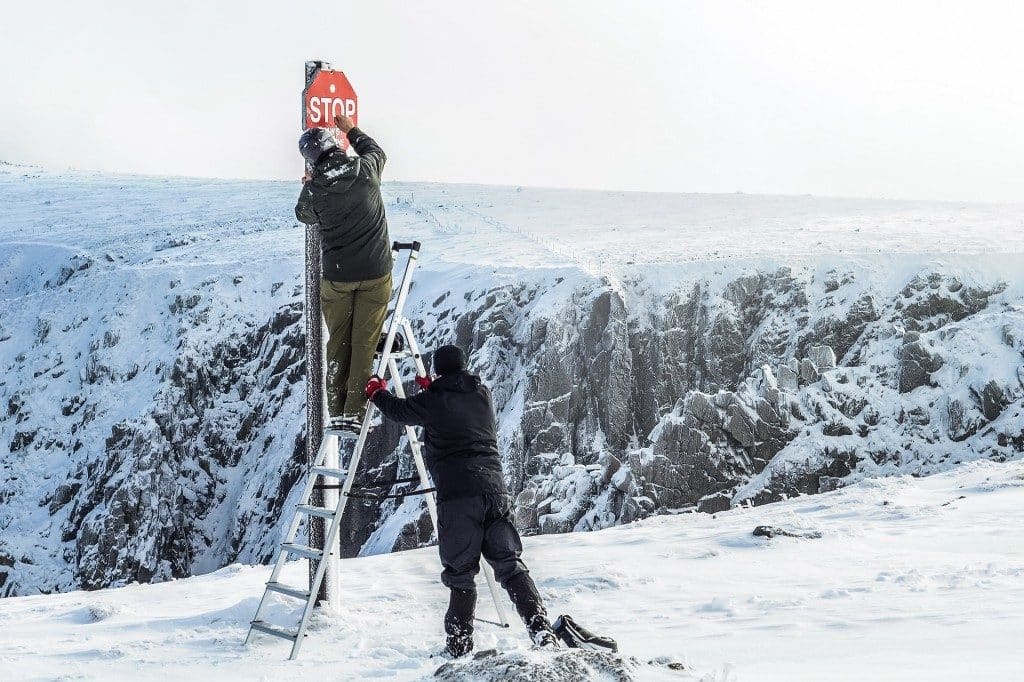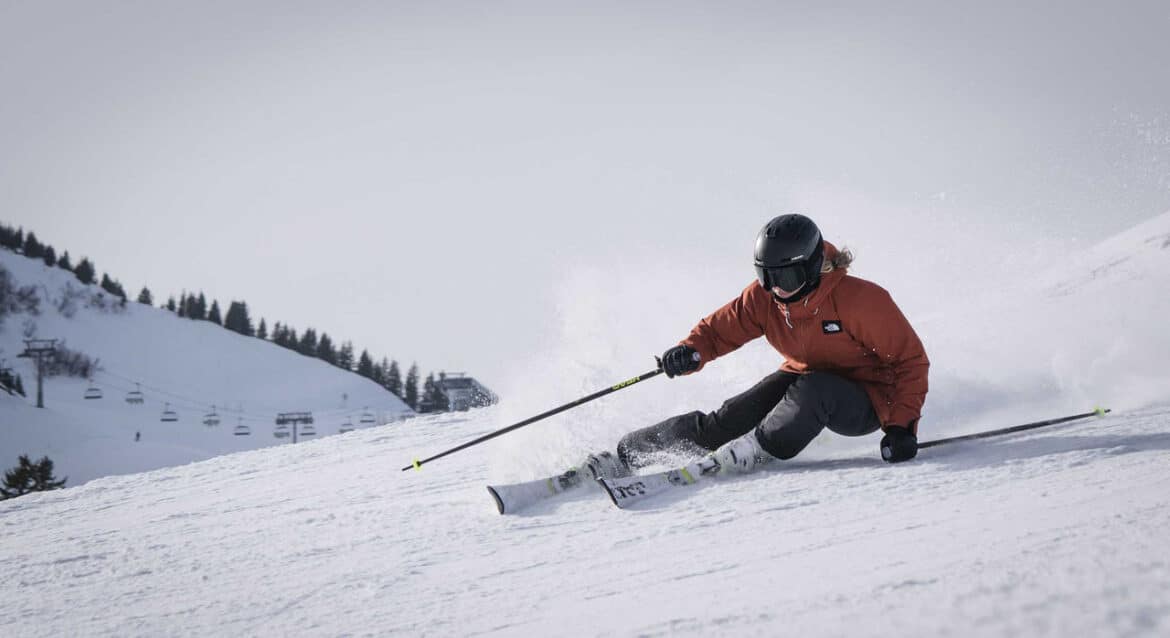Table of Contents
Skiing is hands down one of the most exciting winter sports, but let’s be honest — it comes with its fair share of risks. I’ve had my own close calls, from ski boot injuries to shoulder injuries from skiing. Trust me, knowing about common ski injuries and how to prevent them can really make a difference in your experience on the slopes. Whether you’re just starting out or you’ve been skiing for years, staying aware of the risks of skiing is key to having fun while staying injury-free.
Ahead, I’m going to break down some of the most common ski injuries, share a few snow skiing safety tips, and even suggest some exercises for snow skiing to help reduce your risk. Plus, I’ll give you advice on how to protect your knees, shoulders, and other important areas, so you can ski safely and confidently all season long.
Most Common Ski Injuries
Before hitting the slopes, it’s essential to know the most common ski injuries so you can be prepared. Skiing can be physically demanding, and even the best skiers can fall victim to injuries.
Knee Injuries
The knees are particularly vulnerable during skiing because of the twisting motions and sudden turns. How to protect knees while skiing should be a priority.
- Ligament tears (especially ACL injuries) are common.
- Knee sprains can occur from sudden movements or poor technique.
Shoulder Injuries
Shoulder injuries from skiing are often the result of falls, especially when trying to break a fall or catch oneself during a high-speed descent.
- Dislocated shoulders can happen when a skier falls forward and uses their arms to brace.
- Rotator cuff injuries are also fairly common, especially in skiers who don’t properly warm up or who perform repetitive motions without strengthening their shoulders.
Fractures
Fractures are a common concern when skiing, particularly in the wrists, arms, and legs. Skiers may try to catch themselves during a fall, leading to broken bones.
- Wrist fractures happen when skiers fall on their outstretched hands.
- Leg fractures, including tibial fractures, often occur from twisting or high-impact falls.
Ski Boot Injuries
Ski boots can cause discomfort or injuries if they don’t fit properly. Ski boot injuries can range from blisters and bruises to more severe conditions like shin splints.
- Fitting issues can lead to poor posture and unnecessary strain.
- Overuse injuries can result from long days of skiing without adequate rest.
Head Injuries
Though not as common, head injuries are some of the most serious risks of skiing. Helmets are essential protection for skiing, as falls can lead to concussions or more severe trauma.
How to Prevent Common Ski Injuries

Credit: physioextra.ca
Skiing can be a blast, but skiers’ protection is key. Here are some snow skiing safety tips to keep you injury-free:
A. Wear the Right Gear
Having the proper ski safety kit is crucial. This includes a well-fitted helmet, padded clothing, and knee pads. A ski safety kit ensures that you’re prepared for unexpected falls.
- Ski helmet: A helmet is the best protection for skiing — it can save you from a serious head injury.
- Proper ski boots: Ensure your boots fit correctly to prevent ski boot injuries and discomfort.
If you need help finding the best gear, check out these warmest ski jackets!
B. Warm-Up Before Hitting the Slopes
Start with a few gentle stretches and exercises for snow skiing to get your muscles ready. Warming up helps prevent strains and sprains.
- Leg and core exercises: Strengthening these areas can help prevent knee and back injuries.
- Shoulder and arm exercises: Warming up your arms and shoulders can reduce the risk of shoulder injuries from skiing.
C. Know Your Limits
One of the best tips for winter sports safety is not pushing yourself too hard. Ski at a pace that’s comfortable for you and know when to take a break.
- Avoid overexertion: Skiing for hours without rest can lead to fatigue and increase your chances of an accident.
- Pace yourself: Take breaks and hydrate to keep your energy up.
D. Learn How to Stop While Skiing
Learning how to stop while skiing is essential for avoiding crashes and falls. Make sure you know how to safely slow down and stop before heading down the slopes.
- Snowplow method: Beginners should use the snowplow technique to slow down gradually.
- Controlled turns: Learning how to turn properly can help you avoid the need for sudden stops.
Take Ski Lessons
If you’re new to skiing, or even if you’re an experienced skier, taking lessons can help reduce your risk of injury. Proper technique is key to preventing accidents.
Which is Safer: Snowboarding or Skiing?

Credit: palegaladvice.com
A common question many new winter sports enthusiasts have is, “Which is safer: snowboarding or skiing?” While both sports carry risks, studies suggest skiing may have slightly more injuries overall, primarily due to the higher speed and the risk of twisting motions involved in skiing.
However, snowboarding injuries tend to be more related to wrist and upper body injuries, while skiing injuries are often centered on the lower body, such as knee or leg injuries. Ultimately, the safest choice depends on your personal skill level and the precautions you take.
Snow Skiing Tips for Advanced Skiers
For advanced skiers, it’s important to continuously challenge yourself while keeping safety in mind. Here are a few snow skiing tips advanced skiers can use:
-
Work on carving: Carving with your skis gives you better control and reduces the risk of falls.
-
Avoid risky areas: Stick to slopes that match your ability, and avoid dangerous terrains that could lead to accidents.
-
Practice quick stops: Perfecting your stopping technique can help you avoid falls on steep or icy slopes.
Ski Jumping Injuries
Ski jumping is an entirely different animal and comes with its own set of risks. Ski jumping injuries typically result from falls, misjudgments during the jump, or landing improperly. Skiers involved in this type of event should prioritize protection for skiing and wear additional protective gear to mitigate the risks.
FAQ’s
Ready for answers? Let’s dive into these FAQs ahead!
How can I prevent knee injuries while skiing?
To protect your knees, focus on strengthening exercises for snow skiing and wear properly fitted boots. Ensure you warm up before skiing and practice good technique.
Can skiing cause shoulder injuries?
Yes, shoulder injuries from skiing often occur during falls when skiers try to catch themselves. Protect your shoulders by warming up and using a helmet.
What are the most common skiing injuries?
The most common ski injuries include knee injuries, shoulder injuries, fractures, and head injuries. Proper safety gear and technique can help reduce these risks.
How do I avoid ski boot injuries?
Ensure your ski boots fit properly to avoid discomfort and ski boot injuries. If your boots are too tight or too loose, it can cause muscle strain and poor posture.
Is skiing or snowboarding safer?
Both sports carry risks, but skiing is generally considered to have more injuries related to the lower body. Snowboarding, however, tends to lead to more wrist injuries.
The Bottom Line
Skiing is an amazing sport, but it comes with risks. By taking the proper precautions, like wearing a ski safety kit, knowing how to stop while skiing, and following the best tips for winter sports safety, you can greatly reduce the chances of injury. Stay safe, stay prepared, and enjoy the thrill of the slopes!

